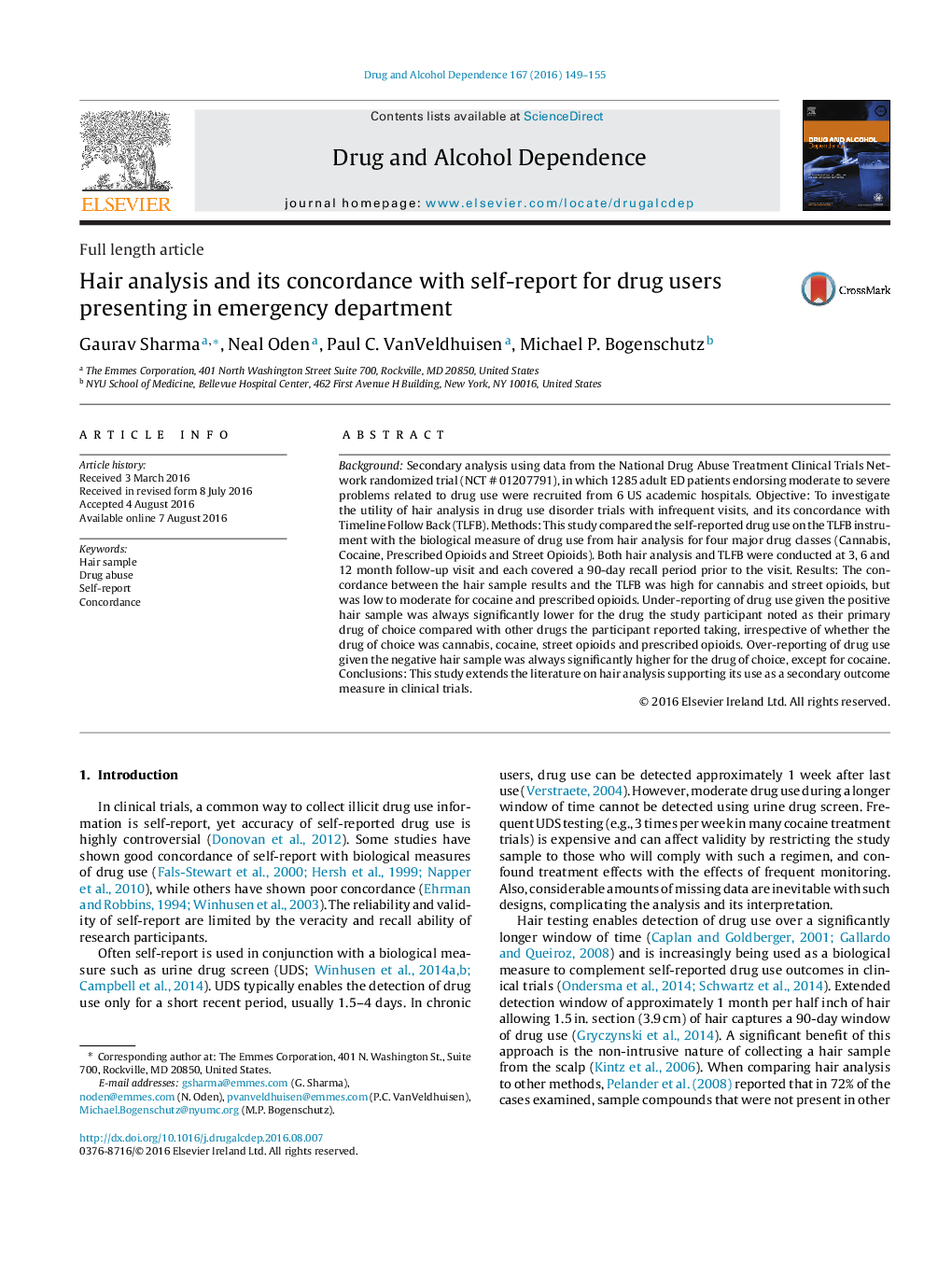| کد مقاله | کد نشریه | سال انتشار | مقاله انگلیسی | نسخه تمام متن |
|---|---|---|---|---|
| 5120506 | 1486124 | 2016 | 7 صفحه PDF | دانلود رایگان |
- Concordance between hair sample and TLFB was high for cannabis and street opioids.
- Concordance was low to moderate for cocaine and prescribed opioids.
- Under-reporting of drug use was significantly lower for primary drug of choice.
- Females and older age were associated with under-reporting of cannabis use.
BackgroundSecondary analysis using data from the National Drug Abuse Treatment Clinical Trials Network randomized trial (NCT # 01207791), in which 1285 adult ED patients endorsing moderate to severe problems related to drug use were recruited from 6 US academic hospitals. Objective: To investigate the utility of hair analysis in drug use disorder trials with infrequent visits, and its concordance with Timeline Follow Back (TLFB). Methods: This study compared the self-reported drug use on the TLFB instrument with the biological measure of drug use from hair analysis for four major drug classes (Cannabis, Cocaine, Prescribed Opioids and Street Opioids). Both hair analysis and TLFB were conducted at 3, 6 and 12 month follow-up visit and each covered a 90-day recall period prior to the visit. Results: The concordance between the hair sample results and the TLFB was high for cannabis and street opioids, but was low to moderate for cocaine and prescribed opioids. Under-reporting of drug use given the positive hair sample was always significantly lower for the drug the study participant noted as their primary drug of choice compared with other drugs the participant reported taking, irrespective of whether the drug of choice was cannabis, cocaine, street opioids and prescribed opioids. Over-reporting of drug use given the negative hair sample was always significantly higher for the drug of choice, except for cocaine. Conclusions: This study extends the literature on hair analysis supporting its use as a secondary outcome measure in clinical trials.
Journal: Drug and Alcohol Dependence - Volume 167, 1 October 2016, Pages 149-155
